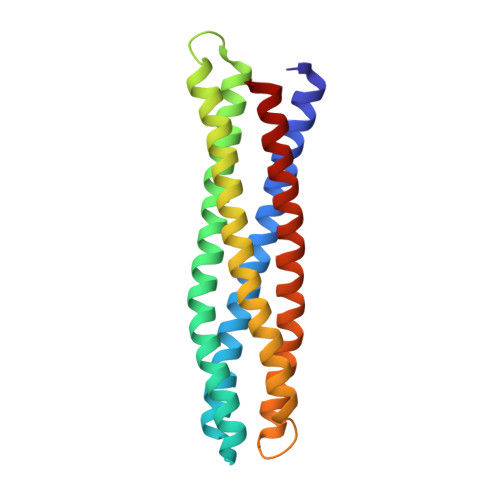Rational design of photosynthetic reaction center protein maquettes.
Ennist, N.M., Stayrook, S.E., Dutton, P.L., Moser, C.C.(2022) Front Mol Biosci 9: 997295-997295
- PubMed: 36213121
- DOI: https://doi.org/10.3389/fmolb.2022.997295
- Primary Citation of Related Structures:
8D9O, 8D9P - PubMed Abstract:
New technologies for efficient solar-to-fuel energy conversion will help facilitate a global shift from dependence on fossil fuels to renewable energy. Nature uses photosynthetic reaction centers to convert photon energy into a cascade of electron-transfer reactions that eventually produce chemical fuel. The design of new reaction centers de novo deepens our understanding of photosynthetic charge separation and may one day allow production of biofuels with higher thermodynamic efficiency than natural photosystems. Recently, we described the multi-step electron-transfer activity of a designed reaction center maquette protein (the RC maquette), which can assemble metal ions, tyrosine, a Zn tetrapyrrole, and heme into an electron-transport chain. Here, we detail our modular strategy for rational protein design and show that the intended RC maquette design agrees with crystal structures in various states of assembly. A flexible, dynamic apo-state collapses by design into a more ordered holo-state upon cofactor binding. Crystal structures illustrate the structural transitions upon binding of different cofactors. Spectroscopic assays demonstrate that the RC maquette binds various electron donors, pigments, and electron acceptors with high affinity. We close with a critique of the present RC maquette design and use electron-tunneling theory to envision a path toward a designed RC with a substantially higher thermodynamic efficiency than natural photosystems.
- Department of Biochemistry and Biophysics, University of Pennsylvania, Philadelphia, PA, United States.
Organizational Affiliation:

















